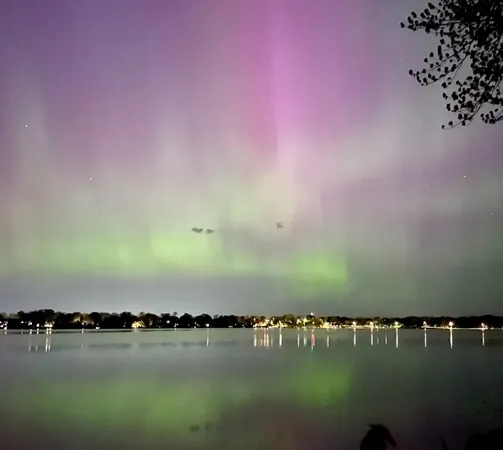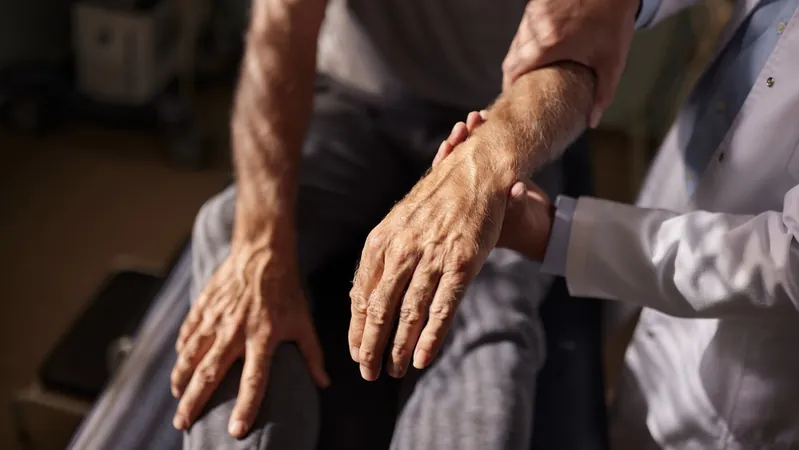
Unlock the Secrets to Capturing the Majestic Northern Lights: Expert Tips Revealed!
2024-10-11
Author: Emma
If you've ever been enchanted by the idea of witnessing the breathtaking aurora borealis live, now is your chance! After a spectacular display last night, another magnificent northern lights show is expected to light up the skies tonight and possibly even into Saturday, thanks to significant solar activity observed this week.
This surge of auroral excitement is rooted in the sun's magnetic field currently at its peak in an 11-year cycle, resulting in increased solar storms. These storms, categorized by strength, have led us to anticipate severe (G4) storm levels, with the potential for an extreme (G5) event, reminiscent of the nearly 13-hour aurora display witnessed on May 10 and 11.
To make the most of your northern lights experience—whether you’re a first-timer or an experienced enthusiast—follow these handy tips and tricks for ensuring your evening is not only enjoyable but that you capture stunning photographs as well.
Safety First!
Getting away from light pollution is crucial for witnessing the aurora, so seek out remote areas such as country roads or open fields. Don’t forget to carry a flashlight and always be vigilant of your surroundings; watch for wildlife, such as bears or coyotes, and be cautious of natural hazards like trails, drop-offs, and rocky terrain. Always let someone know your whereabouts, especially if you're venturing out alone or with unfamiliar persons, and have an emergency kit ready in your vehicle.
Photography Tips: Capture the Magic
For iPhone Users:
- Activate night mode (iPhone 11 and later) or use manual mode via third-party apps.
- Set exposure time between three to ten seconds.
- Start your ISO between 400 and 600 and adjust based on lighting.
- Turn off the flash and set your focus to manual or infinity.
- Use a three-second timer to eliminate camera shake.
For Android Users:
Follow similar settings as the iPhone, utilizing pro/manual/night modes and the same exposure and ISO guidelines.
For Dedicated Cameras:
- Always use a tripod for stability.
- Opt for manual mode on your camera.
- Keep your shutter speed on bulb mode for control, typically maintaining it between five to 13 seconds depending on the brightness of the auroras.
- Utilize the lowest F-stop available on your lens to maximize light capture (e.g., f/1.4 works excellently with wide-angle lenses).
- Adjust your ISO according to your camera's performance in low light, keeping between 400 and 800 for advanced models, and be cautious with higher settings as they may introduce grain.
RAW vs. JPEG:
For those who wish to edit their photos extensively, opt for RAW files as they retain the highest quality and detail. JPEG can work fine for casual snaps that won’t undergo heavy editing.
Final Thoughts:
By following these suggestions, you'll enhance your chance of capturing stunning aurora photographs while enjoying the wonders of nature. Make sure to dress warmly, while keeping your camera gear safe and ready! Don't miss out on this incredible opportunity to witness one of nature's greatest spectacles and capture memories that will last a lifetime. Happy aurora hunting!









 Brasil (PT)
Brasil (PT)
 Canada (EN)
Canada (EN)
 Chile (ES)
Chile (ES)
 España (ES)
España (ES)
 France (FR)
France (FR)
 Hong Kong (EN)
Hong Kong (EN)
 Italia (IT)
Italia (IT)
 日本 (JA)
日本 (JA)
 Magyarország (HU)
Magyarország (HU)
 Norge (NO)
Norge (NO)
 Polska (PL)
Polska (PL)
 Schweiz (DE)
Schweiz (DE)
 Singapore (EN)
Singapore (EN)
 Sverige (SV)
Sverige (SV)
 Suomi (FI)
Suomi (FI)
 Türkiye (TR)
Türkiye (TR)